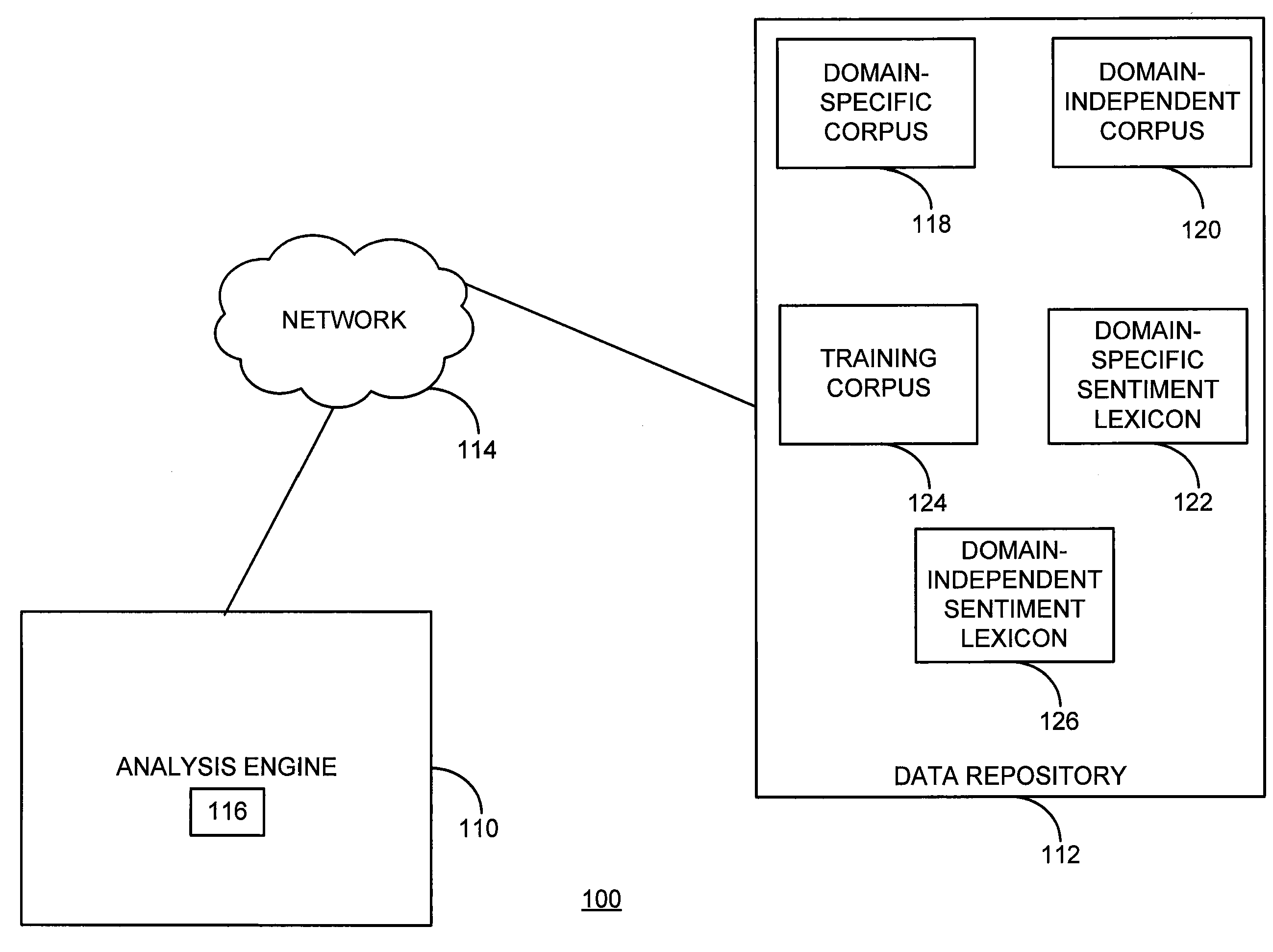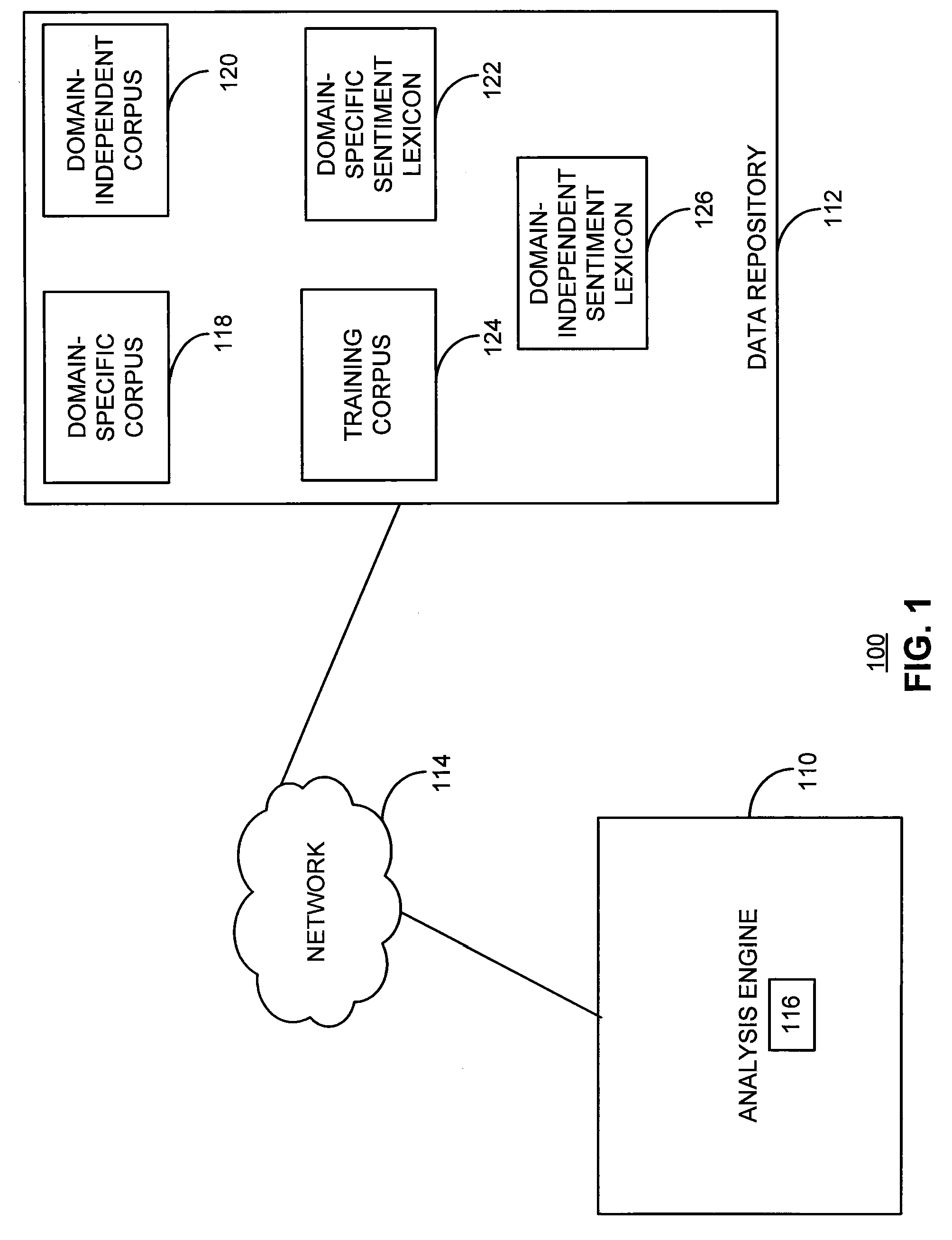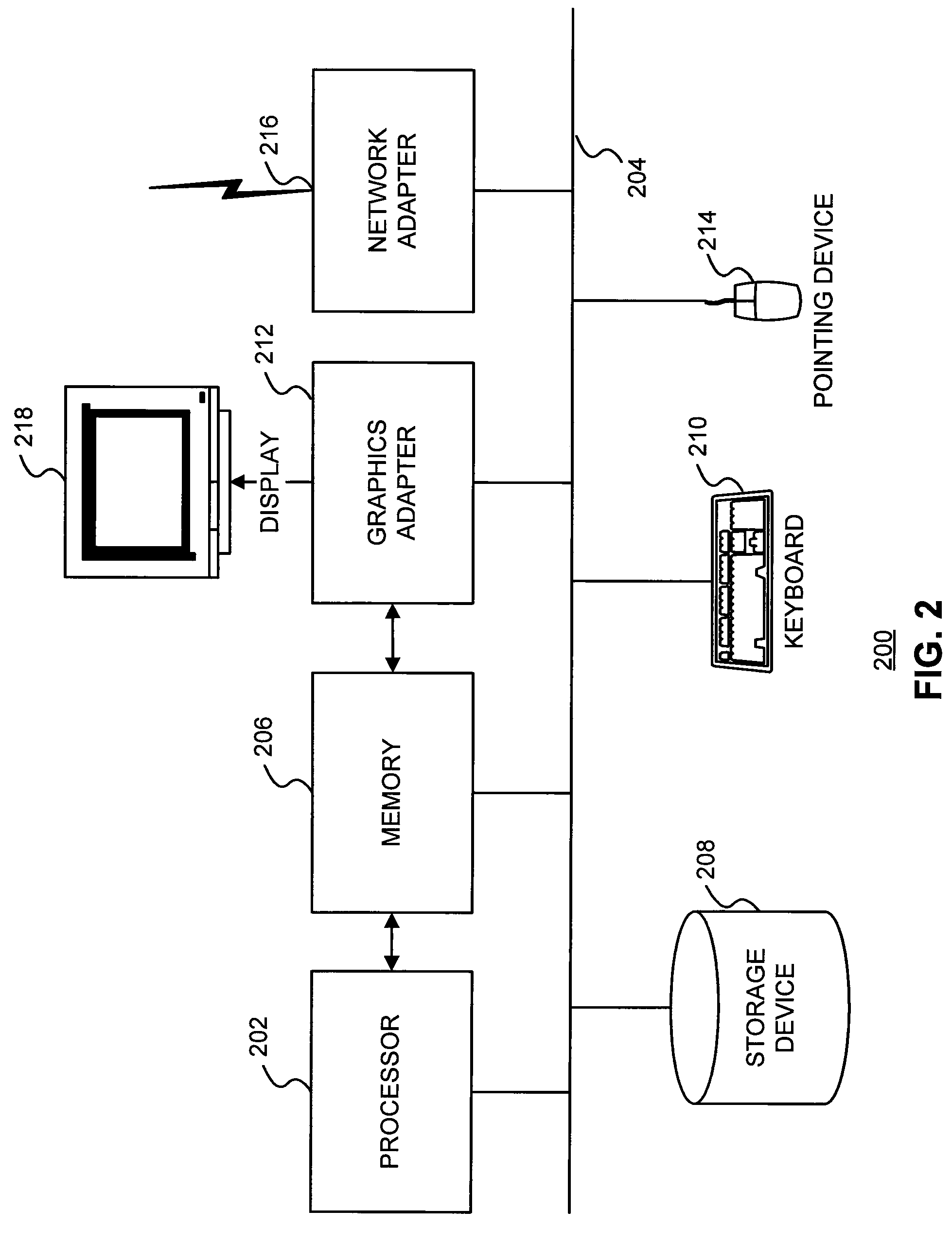Domain-specific sentiment classification
a domain-specific and sentiment-based technology, applied in the field of natural language processing, can solve the problems of not allowing for sentiment expression, difficult to perform sentiment classification across multiple domains, and words relevant in one domain may not be relevant in another domain
- Summary
- Abstract
- Description
- Claims
- Application Information
AI Technical Summary
Benefits of technology
Problems solved by technology
Method used
Image
Examples
Embodiment Construction
I. Overview
[0015]FIG. 1 is a high-level block diagram of a computing environment 100 according to one embodiment. FIG. 1 illustrates an analysis engine 110 and a data repository 112 connected to a network 114. Although FIG. 1 illustrates only a single analysis engine 110, embodiments can have multiple engines. Likewise, there can be multiple data repositories on the network 114. Only one of each entity is illustrated in order to simplify and clarify the present description. There can be other entities on the network 114 as well. In some embodiments, the analysis engine 110 and data repository 112 are combined into a single entity.
[0016]The analysis engine 110 supports domain-specific sentiment classification for documents stored in the repository 112 and / or other locations. In one embodiment, the analysis engine 110 uses the documents in the repository 112 to identify a domain-specific sentiment lexicon 122 of n-grams. In addition, the analysis engine 110 uses the n-grams in the dom...
PUM
 Login to View More
Login to View More Abstract
Description
Claims
Application Information
 Login to View More
Login to View More - R&D
- Intellectual Property
- Life Sciences
- Materials
- Tech Scout
- Unparalleled Data Quality
- Higher Quality Content
- 60% Fewer Hallucinations
Browse by: Latest US Patents, China's latest patents, Technical Efficacy Thesaurus, Application Domain, Technology Topic, Popular Technical Reports.
© 2025 PatSnap. All rights reserved.Legal|Privacy policy|Modern Slavery Act Transparency Statement|Sitemap|About US| Contact US: help@patsnap.com



